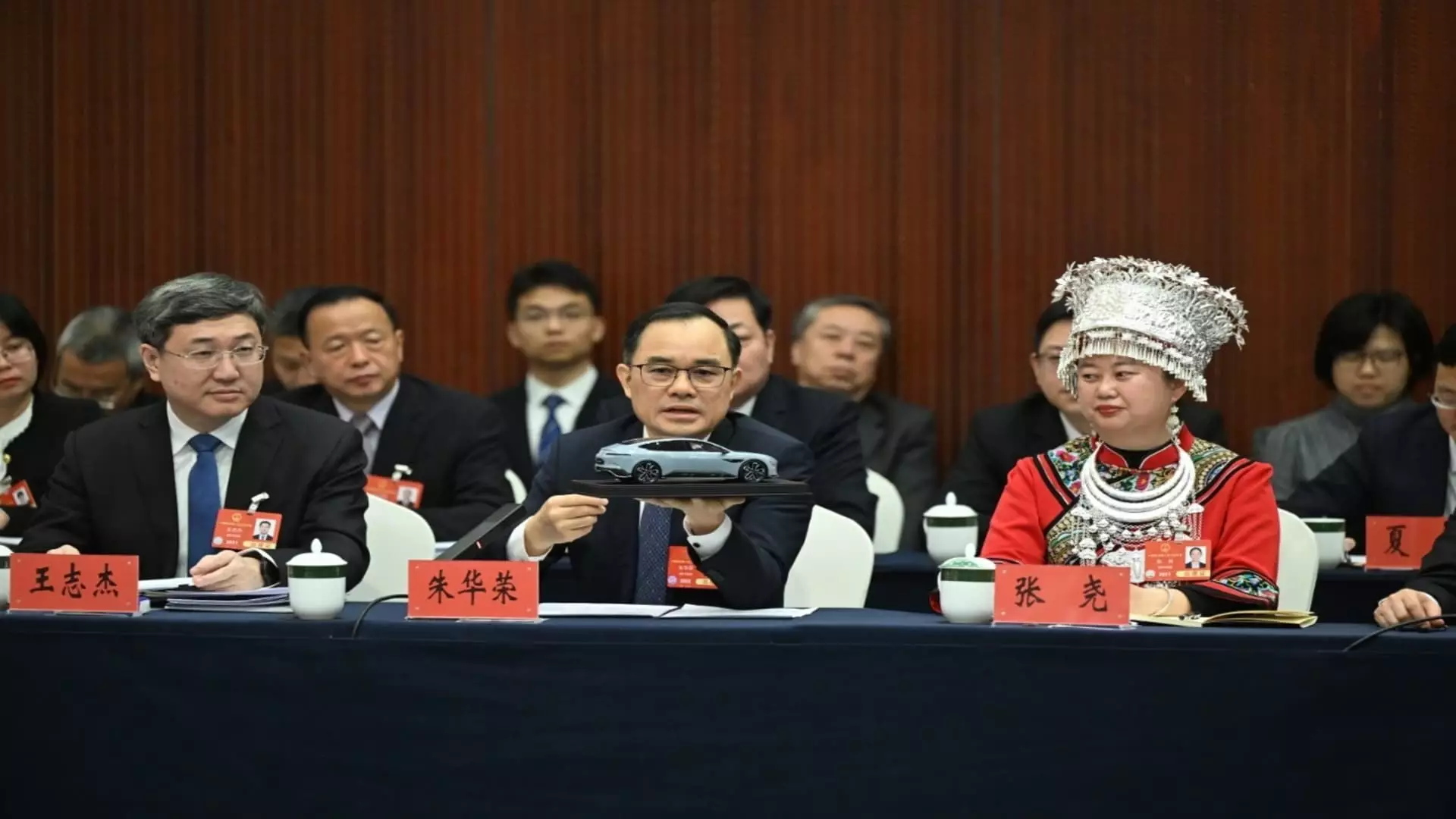In the landscape of global technology, few developments resonate with the same fervor as China’s burgeoning artificial intelligence (AI) sector. Following three years of lackluster venture capital activity, the recent launch of DeepSeek’s AI platform has ignited hope and interest among investors, reminiscent of the early days of the internet boom. This resurgence highlights not just a recovery phase but a transformational shift in the market dynamics, prompting both domestic and international stakeholders to reconsider their approaches to investment.
What makes this moment particularly striking is the pent-up desire from investors, who have long awaited a breakthrough in the Chinese tech environment plagued by regulatory uncertainties. As announced by Insilico Medicine’s CEO, Alex Zhavoronkov, their substantial Series E funding of $110 million showcases the renewed enthusiasm among venture capitalists. Insilico’s utilization of DeepSeek’s AI technology underlines a strong correlation between innovation and investment, offering a possible blueprint for future deals.
A Wave of Interest Following Innovation
The seismic shift toward generative AI can be traced back to a conscious effort by industry leaders in China to focus on leveraging homegrown technologies for various applications, especially in healthcare and manufacturing. Insilico’s trajectory suggests that seasoned players are not merely recovering past losses but are positioned to thrive amid the changing tides, further attracting the interest of foreign investors eager to dive into this vibrant ecosystem. The fact that such a high number of local funds—akin to an avalanche—sought participation illustrates a community eager to capitalize on this moment.
This fascination with generative AI is not without merit. Companies like Insilico are already demonstrating significant advancements, with multiple drugs achieving clinical trial approvals. This progress boosts investor confidence, reflecting a palpable shift in sentiment towards a more promising future. The formation of “E2” funding rounds speaks volumes about the unexpected demand, revealing a dramatic evolution in investment priorities—a departure from past strategies that had previously stifled growth.
Strategic Investment Amid Uncertainty
Nonetheless, despite these opportunities, some caution is warranted. Annabelle Yu Long of BAI Capital offers a measured perspective, emphasizing selective investments rather than a blind rush into new ventures. She cites a strategy focusing on firms already demonstrating profitable application of AI technologies, as companies like Black Lake and Lejian illustrate the tangible benefits that AI integration can provide. This nuanced outlook highlights a recognition that while the sector is ripe with potential, the critical distinguishing factor between success and failure often comes down to a firm’s maturity and proven capacity for execution.
Furthermore, Long stresses the disparity in capital availability between Chinese and U.S. funds, advocating for a more calculated approach in the context of existing holdings. The urgency to identify the next “DeepSeek” reflects an understanding of market dynamics shaped by past lessons, urging investors to leverage historical insights in their future endeavors.
Government Incentives and Market Readjustments
As investor confidence rebounds, the Chinese government’s role is quintessential in this renaissance. President Xi Jinping’s overt endorsement of DeepSeek signals a broader acceptance of AI technologies, causing ripples of optimism throughout the industry. The government’s commitment to facilitating venture capital growth provides a clearer pathway and encourages long-term investments in tech.
Moreover, recent plans to mobilize significant resources for technological development—identified to be around 1 trillion yuan—indicate a robust institutional backing for the sector. These policies not only ease the uncertainties that have hampered growth but also lay a fertile foundation for sustained investment in AI applications, aligning with the vision of a more innovation-driven economy.
Challenges Linger Despite Optimism
However, beneath the surface of increasing enthusiasm lies a complex web of challenges. The geopolitical tensions between the U.S. and China continue to complicate potential cross-border investments, creating a sense of caution among foreign investors. Additionally, the regulatory landscape remains unpredictable, with potential implications for how international markets perceive Chinese AI enterprises. As highlighted by industry experts, while the market holds incredible potential, it is also fraught with risks that demand careful navigation.
The growing realization that innovative breakthroughs are feasible within China is an encouraging sign. The sheer volume of educated engineers and data scientists in the country points toward an inexhaustible talent pool ready to tackle the AI frontier head-on. Hence, while challenges exist, the confluence of investment interest, government support, and a skilled workforce constructs a promising narrative for the future of AI in China.
In summation, the unfolding dynamics within China’s AI sector, catalyzed by DeepSeek’s breakthrough, herald a potent blend of optimism and caution. Investors and companies alike must thus navigate these transformative waters judiciously, as they await the next wave of innovation and the opportunities that follow.

